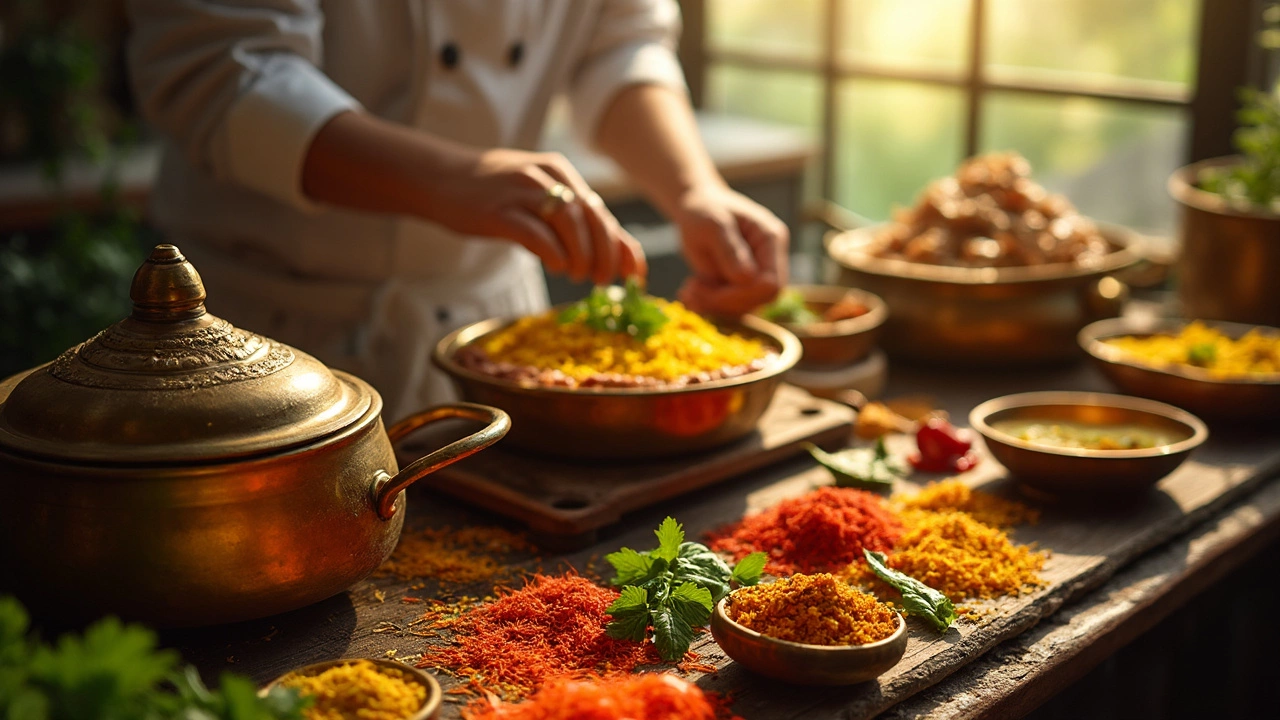Slow-Cooked Biryani: Master the Art of Flavorful, Tender Rice
When working with slow‑cooked biryani, a low‑heat, moisture‑rich version of the classic layered rice dish that lets flavors meld over time. Also known as low‑and‑slow biryani, it blends the tradition of biryani with the technique of slow cooking and the power of Indian spices. This combination creates a dish where each grain of rice absorbs seasoned broth, and every bite delivers a balanced burst of aroma and taste.
Key Steps for Perfect Slow‑Cooked Biryani
slow‑cooked biryani isn’t just about cooking longer; it’s about layering flavors strategically. First, the rice: basmati with its long, fragrant grains is the go‑to choice because its sturdy texture holds up during extended heat. Second, the marination: chicken, lamb, or vegetables soak in yogurt, ginger‑garlic paste, and a blend of cumin, coriander, cardamom, and cloves. This marination step requires acid to tenderize meat and to lock in spice essence. Third, the layering: a bottom layer of partially cooked rice meets a top layer of marinated protein, interspersed with fried onions, fresh herbs, and a drizzle of ghee. The slow‑cooking process enhances spice infusion, allowing the heat to travel gently through the pot, which creates a uniform, moist texture without burning. Finally, the seal: a tight‑fitting lid or dough rim traps steam, turning the pot into a miniature oven where the rice finishes cooking and the flavors meld.
Practical tips keep the process smooth. Use a heavy‑bottomed pot or a Dutch oven to avoid hot spots; this ensures the rice cooks evenly. Maintain a low simmer—around 80‑90°C (175‑195°F)—so the rice absorbs liquid without breaking down. If you prefer a smoky edge, finish the dish with a “dum” step: briefly place the sealed pot over high heat, then let it sit off the flame for 10‑15 minutes; the trapped steam creates a gentle pressure that lifts the flavors. Variations are endless: replace meat with paneer for a vegetarian twist, or add saffron‑soaked milk for a royal hue. Each adjustment still respects the core principle—slow cooking amplifies aroma, tenderness, and depth.
Below, you’ll find a curated mix of articles that dive deeper into each component: from the science behind lemon brightening rice, to secret spice blends that make biryani unforgettable, and even nutrition insights that debunk the “junk food” myth. These resources will give you the confidence to experiment, troubleshoot, and perfect your own slow‑cooked biryani at home.

Why Biryani Takes So Long to Cook
Biryani, a beloved dish, often takes a while to prepare and cook. This is due to the careful layering of ingredients, soaking time for rice, marination of meat, and the slow-cooking process that imparts rich flavors. Understanding why biryani takes so much time can enhance your cooking experience and result in a more delicious dish. Let's delve into the reasons and discover tips to streamline your biryani journey.